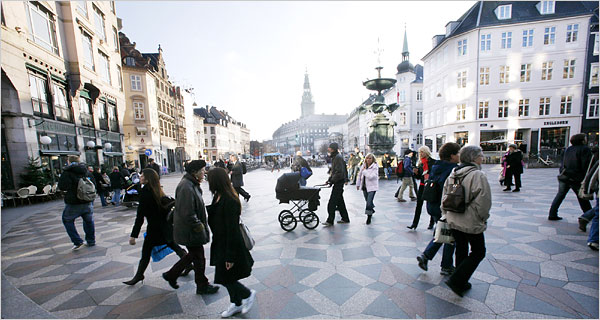skip to main |
skip to sidebar
Table of Contents
Lecture Reflections1/22/10: What is Design?1/29/10: Where Does Danish Design Come From? What are its Roots?2/9/10: Product Design2/16/10: Furniture Design3/9/10: Fashion Design3/12/10: Interior Design3/16/10: Architecture & Design4/13/10: Civic Design, Design for the Public4/16/10: Transportation Design and ArchitectureSymposia Reflections1/26/10: Symposium 1 of 8, "Form and Distinction," by Ole Thyssen2/2/10: Symposium 2 of 8, Design as a Tool for Marketing and Branding2/12/10: Symposium 3 of 8, Making High Quality Design Available to the General Public2/19/10: Symposium, 4 0f 8, Craftsmanship & Mass Production2/26/10: Symposium 5 of 8, Tradition and Modernity3/26/10: Symposium 6 of 8, Architecture & Design as a Vehicle for Creating a Welfare State4/20/10: Symposium 7 of 8, Danish Transportation4/23/10: Symposium 8 of 8, Public Spaces, Public LifeReading Reflections1/26/10: "Form and Distinction," by Ole Thyssen1/29/10: "Design, an Integral Part of the Danish," by Anne Maria Summerhayes2/9/10: Excerpts from "Danish Design," edited by Svend Erik Møller and translated by Morgens Kay-Larsen 2/19/10: "Applied Art Between Nostalgia and Innovation," by Kristian Berg Nielsen2/23/10: "Furniture and Industrial Design," from the Ministry of Foreign Affairs of Denmark2/26/10: "The Magic of the Wokshop - Where hand and mind unite," by Henrik Sten Møller, and "Walk the Plank," by Tine Nyaard and Thomas Dickson3/9/10: "Danish Fashion," by Marie Riegels Melchoir from the Encyclopedia of World Dress and Fashion3/16/10: "New Danish Architecture," by Tobias FaberFieldstudy Reflections
2/10/10: Royal Copenhagen, Georg Jensen, Illums Bolighus
March 2010: Kunstindustrimuseet
March 2010: Danish Design Center
4/14/10: City Walking Tour & Danish Architecture Center
4/13/10 Lecture Reflection: Civic Design, Design for the Public
Upon coming to Copenhagen, I most definitely noticed the cobblestones and flag stones that make up the sidewalks and many of the streets. Simply the feeling of stones under foot as opposed to asphalt was enough to make me pay attention, especially since when I got here, the stones were slick and slippery from the snow. The stones may have a million different functions but ease of snow removal is not one of them. As a casual observer, I noticed the different types of stones, and how they delineated spaces and made it clear where one should walk. But after talking of the streets of Copenhagen as an urban carpet and exploring all of the functions that they serve, I've begun to see them as more than just aesthetically pleasing and historically charming, but as the best example of Democratic design I've seen throughout this class.
 Danish Cobblestones
Danish Cobblestones
http://images.inmagine.com/img/pixtal/pt282/cd282014.jpg
On the most basic level, the streets are democratic in the sense that anyone can walk on them - and this could apply to any street in any city - but what sets Copenhagen apart is it's attention to detail, aesthetics, and functionality, all of which work together to create urban living spaces. Details such as intricately designed manhole covers that refer to Danish culture and history make pedestrians take a second to stop and enjoy the city. Although these details may seem extraneous, they enrich the city and create a feeling of pride in the inhabitants.
Other similarly aesthetic details such as the stone paving at Amagertorv evokes the feeling of being not just on any street, but in a special, celebrated urban location. And these locations, as beautiful and even artistic as they may be, can be enjoyed by anyone. In a truly democratic spirit, Copenhagen has created a test paving site on Strøget, a 1:1 mock up of possible paving designs so that the Danes can provide feedback about which designs they prefer.
 Amagertorv stone paving, designed by Bjørn Nørgaard http://ytiffanie.files.wordpress.com/2009/04/amagertorv.jpg
Amagertorv stone paving, designed by Bjørn Nørgaard http://ytiffanie.files.wordpress.com/2009/04/amagertorv.jpg
Functionality can be seen through innumerable examples. One is the way that utilities are placed under certain types of stones so that when I repair needs to be done, workers can pop off the right stone, do the work, and replace the stone, without damaging the rest of the street. Such good design saves time and energy for both the road workers and the city inhabitants who do not like dealing with road construction. The pictoform systems, sensory paving for the blind, is also another excellent of example of how functional street design is also democratic. The pictoforms not only help the blind safely navigate the city, but are also aesthetically pleasing for everyone.
 Pictoform system, deigned by Knud Holscherhttp://www.abbeville.com/images-catalog/full-size/0789203758.interior05.jpg
Pictoform system, deigned by Knud Holscherhttp://www.abbeville.com/images-catalog/full-size/0789203758.interior05.jpg
The floor may be one of the last places we think of when we consider the design of cities, however, the streets, from the layout down to the construction material and storm drains play a considerably role in how we experience the urban environment. Because Copenhagen pays especial attention to its street design, down to the most minute detail, its streets become a democratic space in which everyone can enjoy and benefit from.
 Amagertorv stone paving, designed by Bjørn Nørgaard http://ytiffanie.files.wordpress.com/2009/04/amagertorv.jpg
Amagertorv stone paving, designed by Bjørn Nørgaard http://ytiffanie.files.wordpress.com/2009/04/amagertorv.jpg Pictoform system, deigned by Knud Holscher
Pictoform system, deigned by Knud Holscher


Wow. Another excellent post.
ReplyDelete